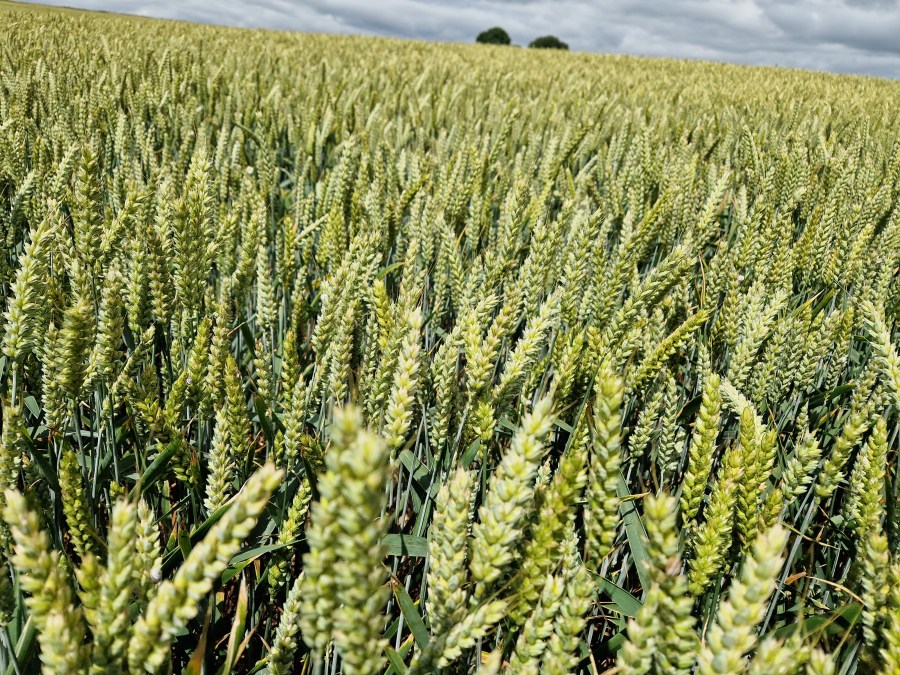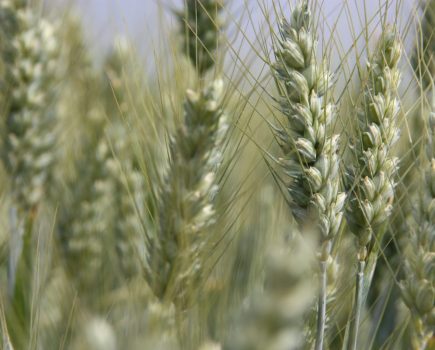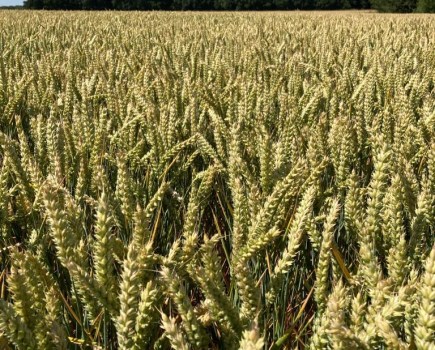As arable growers navigate another season of dry springs, input scrutiny, and tighter margins, CPM’s latest wheat variety survey reveals a growing appetite for dual-purpose reliability, flexible agronomy and straw that pays its way.
“Wheat is definitely still king of the rotation.” OLIVIA BACON
By Charlotte Cunningham
Despite industry changes, wheat remains king of the UK arable rotation. According to a recent CPM/KWS survey, 100% of respondents grow winter wheat, with 32% planting more than 100ha of first wheats alone. Yet beneath that broad commitment lies a sector shifting its priorities, trialling new systems, and weighing variety choices with greater nuance.
Delving deeper into the numbers, barley remains the second most common cereal with 76% of respondents growing it, while oats are grown by 48% – a figure that may surprise some, suggesting a resurgence of interest in this versatile crop.
Rye and maize are less frequently grown, at 14% and 24% respectively. “Wheat is definitely still king of the rotation,” says KWS’ Olivia Bacon. “Many farmers are now even considering continuous wheat, especially as options for break crops diminish.”
Second wheats are on a more modest scale, with more than half of those surveyed planting between 20ha and 40ha. This disparity likely reflects the agronomic challenges and slightly diminished returns associated with second wheat crops, such as higher disease risks and the potential for lower yields, notes Olivia. “Unless you’re a milling grower aiming for premiums, second wheats tend to not be as profitable. So that hectarage is often more conservative.”
In Norfolk, wheat is a mainstay in William Runciman’s rotation. The 200ha mixed farm near Fakenham comprises a 200-head suckler herd and 400 beef finishers, supported by the arable enterprise with winter wheat, sugar beet, forage maize and vining peas forming the rotation. “Wheat is still very much a priority crop for us, and everything we do is based around generating as much straw as possible for the livestock.”
While growers are united that wheat remains quite literally top of the crops, there’s a split in opinions when it comes to optimal establishment, with the survey signalling a transition in practices. Almost half (40%) of growers said they now use minimum tillage as their primary establishment method, however, a significant 32% continue to rely on conventional tillage, whereas just 18% said they opt for direct drilling.
“Min-till is a popular middle ground,” says Olivia. “But it’s not about throwing the plough away. A lot of farmers still use it periodically – maybe every four or five years – depending on field conditions.”
The trend suggests a growing emphasis on soil health and system flexibility, she adds. “It’s all about doing what works for your land and adapting to the season.”
Although having a plan in place is recommended, so is an element of flexibility – particularly with increasingly unpredictable seasons becoming the norm. As such, many growers indicated they employ a flexible system, combining min-till or no-till methods with occasional ploughing to reset fields where necessary – particularly after problematic crops or in the face of persistent weed issues.
This hybrid approach reflects a pragmatic balance between sustainability goals and agronomic realities and is one William is an advocate of, too. The Runcimans take a field-by-field approach to establishment, using whatever system suits the conditions and soil at the time, he explains.
“We have the kit and the confidence to be flexible. Typically, we’ll bale and remove straw straight after harvest then do a light cultivation to green up volunteers. Once we have a chit, we’ll go in with glyphosate, then low-disturbance subsoiling to lift the profile and get air in.”
Drilling uses a Horsch Pronto, which allows for quick establishment and good seed-to-soil contact. “On heavier areas or in wetter seasons, we’ll plough and drill one after the other,” he adds. “No frills; just what’s needed.”
For first wheats – which usually follow forage maize – the same principle applies. “We’re straight in behind the forager with the subsoiler and the drill. Again, if it’s too wet, we’ll plough it up. Flexibility is the name of the game.
“We don’t drill too early in a bid to reduce disease and virus pressure. For first wheats, we typically aim for early October, depending on when the maize is chopped.”
When it comes to selecting wheat varieties, in a perhaps interesting shift, disease resistance just pips yield to the post at the top of the list of priorities, with 78% of growers rating it as a key factor.
Olivia says while yield remains a primary driver – cited by 77% of respondents – this focus on disease is understandable given the heightened disease pressures seen in recent seasons, particularly from yellow rust and septoria.
“Disease resistance slightly outranking yield is really telling. Last year’s high disease pressure is still fresh in everyone’s memory. Plus, this year we’ve observed some unexpected issues with yellow rust, which is still evolving now, but we will see some varieties resistance scores changing next year.”
“These developments are prompting growers to look more closely at genetic resilience and not just the headline yield figures.”
Utilising inherent disease resistance within varieties is an area AHDB has been exploring – namely, how strategic varietal choice can be used to reduce fungicide intensity. So just how far can genetics take farmers when it comes to reducing inputs?
“The RL has made it very easy to identify varieties with strong genetics,” explains Ellie Dearlove, AHDB knowledge transfer manager, cereals and oilseeds. “Varieties with higher levels of disease resistance allow greater flexibility in fungicide programmes, including the omission of sprays and the use of reduced doses, while still maintaining acceptable yield and quality.”
Winter wheat varieties with septoria ratings of 7 or higher are proving particularly useful, she adds. Not only do they provide insurance against early-season infection, but they also allow for reduced fungicide programmes without a significant drop in yield or quality.
Delving into the detail of just how low farmers can go, as a baseline, Ellie says if varietal resistance is high, weather isn’t conducive to disease and fungicide applications are well-timed, lower-input approaches could help increase crop profitability. This could include skipping a T0 in resistant varieties unless disease pressure is high, as well as tweaking a T3 spray depending on fusarium and brown rust risks and the market requirements.
T1 and T2 applications remain crucial, especially for septoria and rust management, but there’s the opportunity in some situations depending on risk factors including resistance ratings and the weather, she adds.
Variety selection is also often dictated by intended end market, and while dual purpose wheats – those which are capable of serving both milling and feed markets – are widely available, the survey indicates that they’ve not yet achieved widespread adoption.
Just 25% of respondents said they regularly grow dual-purpose types, while a further 37% make use of them depending on seasonal and market conditions. “I’m quite surprised by that,” says Olivia. “A variety like KWS Arnie, which performs like a high-yielding feed wheat but also meets milling spec, offers a real safety net. If you don’t hit milling quality, you still have a profitable feed crop.”
KWS Arnie is a Group 2 variety that combines milling quality with the high yields typically associated with feed wheats. Its versatility makes it a strong candidate for those who wish to retain marketing flexibility while pushing for high performance in the field.
With straw a priority for William, he says growing Arnie has been a no-brainer for them. “We were approached by KWS and asked if we’d be interested in trying Arnie, and we said yes straight away.
“The standing power and straw output were immediately appealing, but as a farm that’s always grown seed under contract, it aligned well with our existing setup.”
Last year marked William’s first full season with Arnie and he says he was pleased with its debut. “It really impressed us. It stood well, had great straw integrity, and delivered a clean, easy-to-combine sample. Compared with other varieties on the farm, it was incredibly tidy through the machine.”
Fungicide inputs have also been kept low. “Arnie has proved itself to be a very cheap crop to grow. Last year and this, we’ve only used a simple programme – straight tebuconazole at T1, followed by folpet, Revystar (fluxapyroxad) and azoxystrobin at T2 and prothioconazole and tebuconazole at T3. This year we’ve cut out the Revystar and the crop is still very clean as a second wheat.”
“I think the key is understanding your own system and soil. Arnie might not be the best fit for every hectare, but for us, in the right places, it’s delivering what we require – good standing power, solid yield, and dependable straw.”
This year, Arnie is covering 26ha, matched by an equal area of KWS Maximise. “Maximise is another interesting variety which we think may be more suited to our lighter land. But where Arnie is in stronger ground, it’s holding on well.”
Nitrogen strategy is another area where practices vary significantly. Around 47% of growers reported sticking strictly to feed protocols, while 32% said they manage nitrogen applications to meet milling specifications.
“The nitrogen strategy is pretty straight forward for us, using a little and often approach, normally four splits as we’ve got the time to do it. We begin and end with a feed mentality because it’s the most realistic option for us,” says William. “We’re not on land that will consistently achieve milling spec – it’s not blow-away sand, but it’s not heavy clay either, so we usually grow for feed, although this year we did trial an additional 50kg of nitrogen late in the season to see if milling quality could be within reach.
The remainder of growers surveyed said they take a flexible approach, adjusting their strategy as the season progresses based on crop performance and emerging market opportunities. This adaptability could be a key strength when dealing with increasingly volatile weather patterns and shifting grain prices, notes Olivia.
“A variety like KWS Vibe might be one growers taking this approach to nitrogen find particularly interesting,” she highlights. “It’s a Group 1 which is particularly notable for its strong disease resistance profile, including an 8 rating for yellow rust and a 6.6 for septoria, along with a protein content of 13.2% – the highest on the RL. This makes it a viable option for growers aiming for premium milling markets while maintaining yield security.”
Other promising recent varieties from KWS include KWS Equipe and KWS Newbie – both Group 2 wheats with excellent untreated yields and strong disease packages – as well as KWS Solitaire and KWS Flute, which serve the Group 3 biscuit and feed segments. KWS Scope, a Group 4 hard wheat, stands out for leading yields in the West and strong all-around agronomics.
Taken together, the priorities outlined in the survey and the development of new varieties from breeders such as KWS, highlight a UK wheat sector that’s both stable and evolving. As growers continue to face volatile markets, changing climate conditions, and evolving disease threats, variety choice remains one of the most important strategic levers available. The takeaway? Wheat’s dominance is secure – but the approach to growing it is becoming more sophisticated.
“What we’re seeing is that farmers are being more analytical and flexible,” concludes Olivia. “They want options that deliver no matter what the season throws at them – and that’s where some of these new varieties, including our own, are really going to find their place in the market.”
This article was taken from the latest issue of CPM. Read the article in full here.
For more articles like this, subscribe here.
Sign up for Crop Production Magazine’s FREE e-newsletter here.




